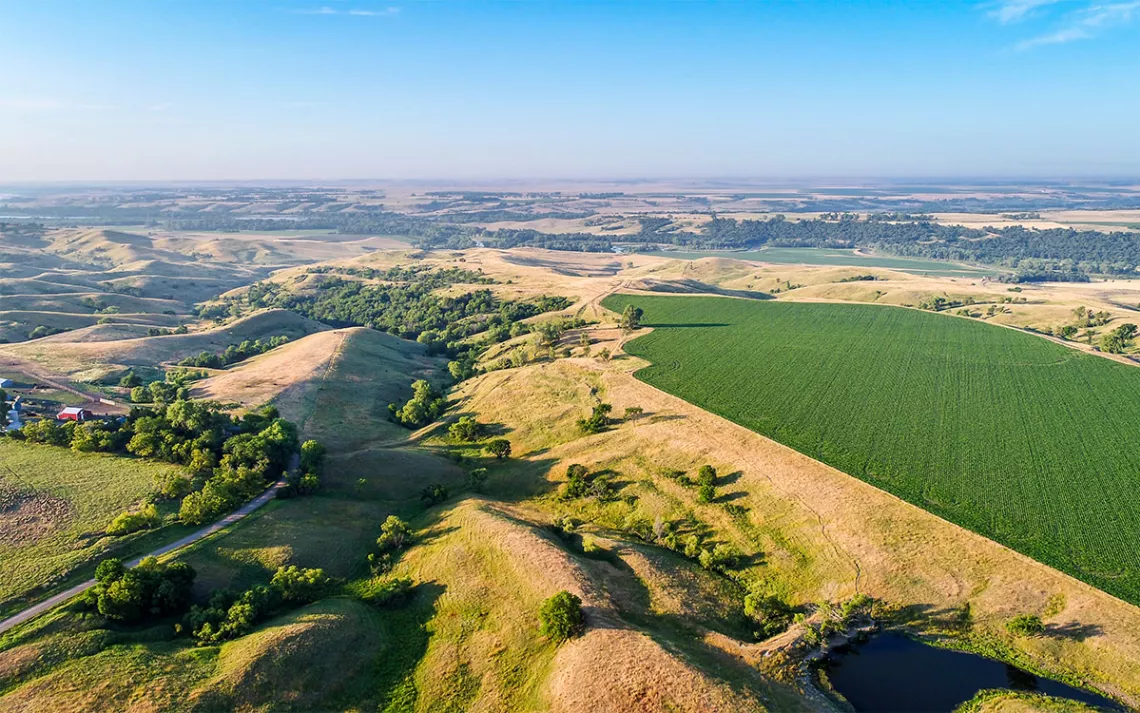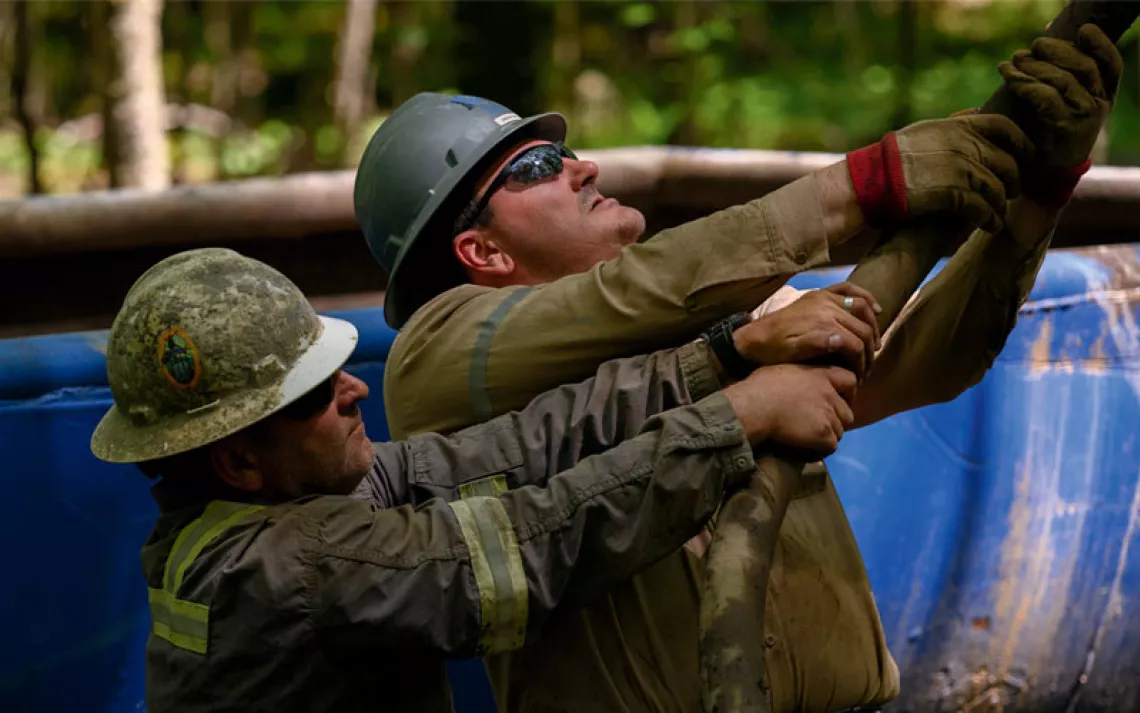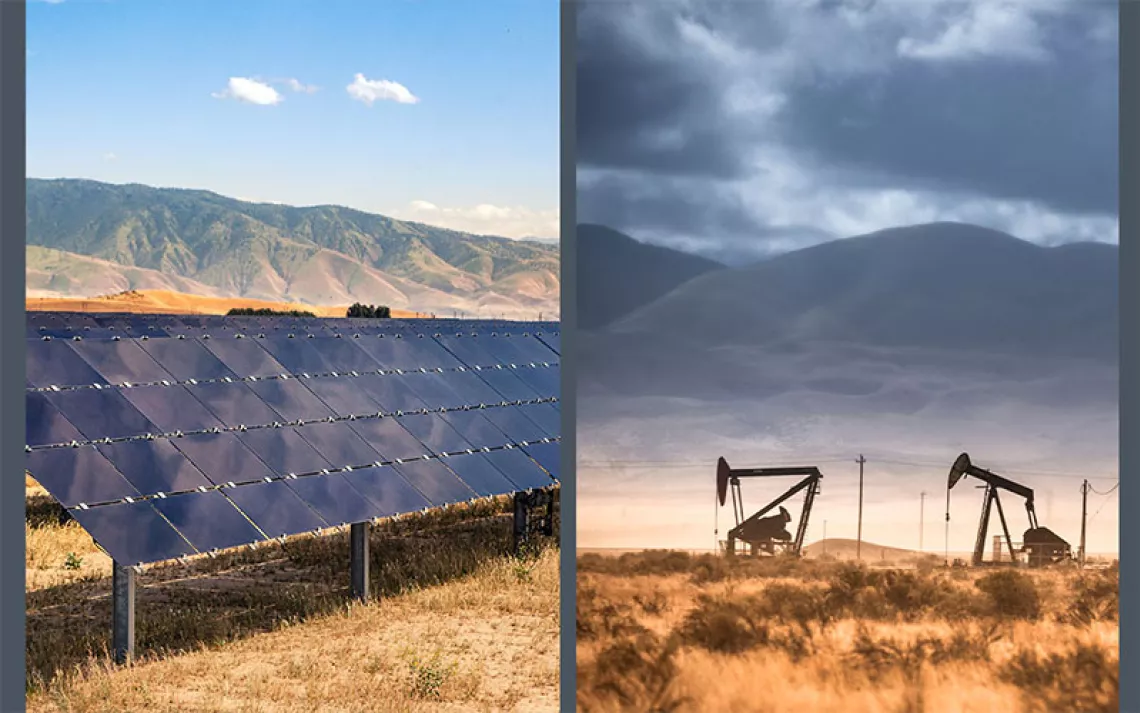Keystone XL Opponents Claim Partial Victory Against Tar Sands Pipeline
TransCanada gets go-ahead, but may have to start planning process from scratch

Farmland in Nebraska Sandhills | Photo by marekuliasz/iStock
The Nebraska Public Service Commission rejected TransCanada’s preferred route for its proposed Keystone XL pipeline today, a decision considered to be a partial victory for the environmental activists, tribal nations, and local ranchers who opposed it. The commission voted 3-2 to allow the pipeline to proceed, but only if built along what’s known as the “mainline alternative route,” which was not part of TransCanada’s application for the project. That could potentially force the Calgary-based company to go back to the drawing board for the dirty tar sands oil pipeline that has been the center of a public battle for nearly a decade.
"We got one step closer to stopping Keystone XL for good today," said Jane Kleeb of Bold Nebraska, a political advocacy network that has organized opposition to the project. "TransCanada did not get their preferred route, and anything other than them getting their preferred route is a big victory for us."
Brian Jorde, the lead attorney for local landowners who would be impacted by Keystone XL, called the development a huge win. “We had a trial in August, and the trial was on a specific issue: whether or not the proposed, preferred route of TransCanada would be approved or denied,” he said at a press conference after the decision was handed down. “That was the sole question at trial—whether or not that route, that line on the map, was in the public interest of Nebraska. Today, we defeated that argument, and we were victorious, because that route was not approved.”
TransCanada’s preferred route for the pipeline would have sliced through the Nebraska Sandhills, a region with ecologically delicate sand dunes, wetlands, and a variety of tree species and prairie grass. The commission rejected that route. Instead, it granted a permit for a route to the east, which has not been studied at either thr state or federal level. Attorneys for ranchers opposed to Keystone XL believe TransCanada would have to submit a new application to proceed with the mainline alternative route and start the process over again. Also, according to the National Resource Defense Council’s Canada project director, Anthony Swift, federal law requires that new developments on major projects such as Keystone XL must be considered under the National Environmental Policy Act.
For its part, TransCanada issued a terse press release following the decision, stating that the company will “conduct a careful review of the public service commission's ruling while assessing how the decision would impact the cost and schedule of the project.”
The Keystone XL pipeline would carry oil from the Alberta tar sand fields 1,179 miles through Nebraska down to the Gulf Coast. The extraction of a gallon of oil from tar sands produces as much as three times the greenhouse gas pollution as a conventional gallon, including 15 percent more carbon dioxide, making it one of the dirtiest forms of fossil fuel production in the world.
The risk of oil spills along the pipeline’s route is a major concern. Today’s decision comes just days after the latest spill from TransCanada’s sister Keystone pipeline, which dumped over 200,000 gallons of oil in Marshall County, South Dakota. That pipeline had as many as a dozen spills in 2011 alone, the year after it was commissioned.
Local farmers and tribal nations fear that a spill from the proposed Keystone XL pipeline could potentially damage the Ogallala aquifer, one of the largest sources of freshwater in North America. Keystone XL would be laid directly over the aquifer in shallow ground. Hundreds of thousands of people get drinking water from the aquifer, and local ranchers and farmers draw on it for irrigation. A spill would also threaten the Mni Wiconi Rural Water System, which provides drinking water to the River Sioux Rosebud Sioux Tribe and the Ogallala Sioux Tribe, among others.
While claiming a partial victory, tribal nation representatives and local ranchers decried the fact that the pipeline is still under consideration in the first place.
“I’m furious,” said Dallas Goldtooth, a Keep It In The Ground organizer for the Indigenous Environmental Network, in an interview. “Amongst our local resistance groups, we’ve come to call this the zombie pipeline. It’s the pipeline that will not stay dead. It just keeps coming back. It’s time for state elected officials to wake up and start taking a stand to stop these projects from impacting our water systems and our communities.”
“What we’ve seen with these projects like Keystone XL is evidence that the current protocols between the federal government and the tribes is inadequate, and completely disregards the rights of the indigenous peoples,” Goldtooth said. “We have to go beyond consultation and move toward consent. Because tribal nations and the grassroots people opposing these projects are tired and angry. Our message has not changed: No pipelines without our consent. No more fossil fuels. We need a just transition to sustainable renewable energy. There’s no ground to give from the perspective of native peoples, because we’ve already given so much.”
Chairman Larry Wright Jr. of the Ponca Tribe of Nebraska called any version of Keystone XL unacceptable. “For our tribal nations, we were not included in this process,” he said. “Even though we don’t hold title to these lands that are in question, it doesn’t diminish the fact that historically, that’s where our people come from. That’s where our people are buried. And we were not consulted along those lines.”
Eriel Deranger of the Athabasca Chipewyan First Nation, who is also the executive director of Indigenous Climate Action, said today’s decision was troubling. “While it’s great that TransCanada has been forced back to the drawing board in their application process, what’s most troubling is that this still is an application being considered. In the face of global climate change, and a global recognition of the rights of indigenous peoples, these are projects we should not be moving forward or even considering, and should be moving away from.”
Art Tanderup is a local Nebraska rancher who has opposed the pipeline since TransCanada first approached him and his wife, Helen, in 2013 about allowing it to cut through their 160-acre property. A recently installed solar system now provides more than 90 percent of the electricity for his farm. In an interview, Tanderup said TransCanada appealed to his pocketbook and his patriotism in trying to convince him to sign on. “They said it was going to make you rich,” he said. “They said we needed this oil rather than Middle Eastern oil, and it’s so safe, and it’s just so wonderful.”
TransCanada offered Tanderup around $24,000 for a permanent easement on the farm, he said, plus a signing bonus. He estimates that he wouldn’t be able to irrigate about 50 acres of crops because of the pipeline, and that the heat the pipeline would generate in the soil would kill anything planted over it. The mainline alternative route approved today would still cut through his property. “It’s very disappointing that the public service commission would stand up for a foreign corporation so that they can get greedier and make more money, and yet the citizens of Nebraska have to take all the risks,” he said.
Opponents vowed to press on with their fight against the project and prevent it from ever breaking ground.
“In the many, many years since this pipeline has been fought, three things have become increasingly clear,” said Sierra Club executive director Michael Brune: “America doesn’t need this oil; Americans increasingly don’t want this oil; and none of us can afford the risks that this pipeline would bring. We will not give up, we will not rest until this pipeline is defeated and until we make progress on building a 100 percent clean energy economy for everyone.”
“We’re going to do everything we can to go through the court system as far as we can,” Tanderup said. “If that doesn’t work, Helen and I have decided that we’re going to be there when the bulldozers come. They’ll have to come through us, or bury us right there.”
 The Magazine of The Sierra Club
The Magazine of The Sierra Club



